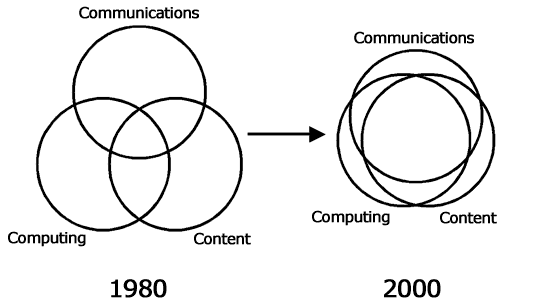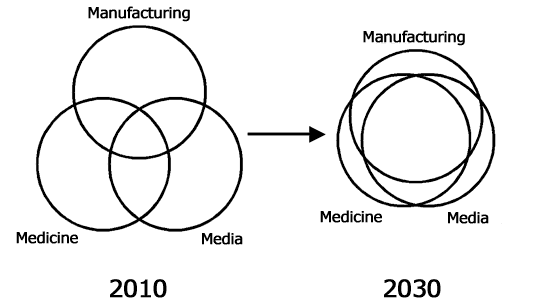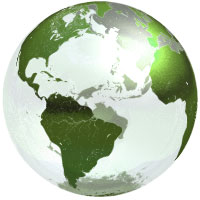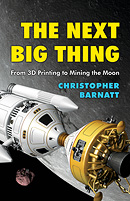 |
|
|
|
You are in: Future Trends : The New Industrial Convergence
The New Industrial Convergence
The "New Industrial Convergence" refers to a blurring in the boundaries between "manufacturing", "medicine" and "media". To some extent, such a blurring is starting to occur as all of these areas of human activity increasingly "go digital" in the broadest sense of the term. However, and far more fundamentally, manufacturing, medicine and media are also beginning to converge as the boundaries disappear between "natural" and "artificial" technologies and systems, and as engineers, doctors and computer scientists all learn to create, program and mash materials, products, media services -- and even life itself -- at the cellular and even near-atomic scale. The New Industrial Convergence is therefore strongly associated with the concept of The Singularity. When it comes to future medicine, the New Industrial Convergence is likely to result in a melding of artificial technology with the human body. However, as will also be the case with future manufacturing and media, such technology will be less and less likely to be made from metal, plastic or silicon chips. Instead, a great many future technologies and products will be organic in nature -- grown rather than manufactured, and in some senses alive. More information on this topic can also be found in my New Industrial Convergence Video. The First Industrial Convergence
Back around 1980, Nicolas Negroponte -- Director of the Media Lab at the Massachusetts Institute of Technology (MIT) -- drew the following diagram that features three overlapping rings to represent the industries of computing, (tele)communications and publishing/broadcasting content.  Via the above diagram, Negroponte illustrated that in 1980 there was relatively little overlap between the computing, communications and content industries, whilst also predicting that by the year 2000 major overlaps in the boundaries of the three industries would exist. The logic for this proposition was that by 2000 the computing, communications and content industries would all have converged due to a common reliance on digital systems, with all three industries basically dealing in the creation, manipulation and storage of binary data. This famous prediction has fairly obviously also proved to be correct.
The New Industrial ConvergenceA common reliance on digital systems and in particular the Internet will continue to drive industrial convergence for many years to come. Indeed, the activities of most industries now already at least in part involve the manipulation and exchange of digital information. However, if redrawing Negroponte's famous diagram today, the overlapping rings would be better labelled to represent the three broad industry sectors of media (here also encompassing the converged industries of computing and telecommunications), manufacturing and medicine. As we approach 2010, these areas of human activity are indeed already starting to share some common ground. Further, and as represented in the diagram below, I would suggest that by around 2030 they will have very significant overlaps indeed.  Primarily the New Industrial Convergence will involve manufacturing, medicine and media sharing increasingly organic modes of operation at the same level of scale. However, it will also be driven by an increasingly common reliance on digitization in the broadest sense of the term. "Media" is already clearly a digital sector as Negroponte's work has so aptly demonstrated. However, "medicine" is also going digital in a biological manner, with doctors destined to become the programmers and re-programmers of the human species as they increasingly manipulate the digital information stored within our DNA. "Manufacturing" too is destined for a digital revolution due to both 3D printing advances, and as future nanotechnologists emerge as atom-by-atom programmers of future materials and final end products. Advances in nanotechnology, genetic engineering and biocomputers clearly already signal the New Industrial Convergence. All of these developments involve engineers, doctors and computer scientists solving the same types of problem at the same physical scale. Indeed, as human beings learn to create, program and replicate materials at the level of the cell, molecule and even atom, so the cutting-edge art, science and practice of manufacturing, medicine and media are already becoming very similar indeed. Key DevelopmentsNanotechnology involves manipulating matter at the near atomic scale. Already nanotechnology has resulted in stronger and lighter materials, as well as new types of display and longer-lasting batteries. However, in future nanobots may be created that will be able to rearrange the atoms of one material into another, and even to self-replicate. In other words, future nanotechnology creations may be a form of artificial life, and with the power to transform the physical world and human biology. For more information, please see the nanotechnology page. Genetic engineering involves altering the traits of living organisms by changing the information encoded within their DNA. This can involve splicing DNA sequences between species - and even between fauna and flora -- to create new transgenic plants or animals. Already transgenic plants have been created that produce insulin. New breeds of mice and new species of pigs have also already been transgenically bred. The potential therefore already exists for farming and manufacturing to merge. For more information, please see the genetic engineering page. Biocomputers are computing devices built from biological hardware or "wetware", with DNA and biochemical reactions replacing silicon chips (and as imagined in my Biocomputer Unboxing "Fantasy Future?" video). Like nanobots or living cells, future biocomputers could potentially self-replicate, and would bridge the gap between computer technology and our own brains. Already nanoscale biocomputers have been built from DNA and proteins, with researchers having the intention of implanting them in the human body to detect cancer and to act as future "molecular doctors". 3D Printing and bioprinting are another key driver of the New Industrial Convergence, as both emerging technologies allow the additive manufacture of objects in a great many layers. Many of the 3D printing advancements made in manufacturing will help in the development of new bioprinters and vise versa. Indeed, as 3D printing becomes a common manufacturing and medical activity, so a great deal of knowledge and technology will come to be shared between those who make inorganic products, and those who see to repair and upgrade the organic matter of ourselves. A Catalyst for ChangeConvergence is a process of gradual boundary loss that results in a binary divide creasing to exist between two previously discrete areas of activity, industrial process or technology application. The New Industrial Convergence will therefore never result in manufacturing, medicine and media becoming exactly the same, no more than it implies that in future there will be some sort of complete mixing of organic and inorganic technology. However, what the New Industrial Convergence does imply, is that in future many technologies, processes and skills will span a wider and wider range of applications. This may well make it easier for individuals or organizations to apply their knowledge across different industries. However, it will also mean that people without significant levels of education will be excluded from more and more choices of career. There are also likely to be a great many ethical debates due to the implications of the New Industrial Convergence as a mechanism for transhumanism. Developments in digital technology over the past two decades should have already proven to us the level of change that can result when boundaries fall between areas of technology application and human expertise. For years there have been those advocating that the Next Big Thing will be that of nanotechnology or genetic engineering. However, what even this brief introduction to the concept of the New Industrial Convergence ought to teach us is that the next "industrial wave" will not form around a single technology as happened when digital convergence took hold and gave us today's digital age. Rather, it is a shared scale of working and knowledge application that will catalyze the revolution beyond the microchip - and which may therefore help the world out of its current state of recession. Return to Future Trends. |
|
|

